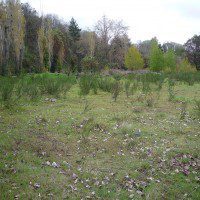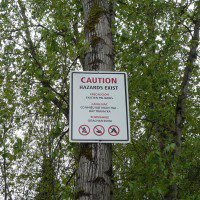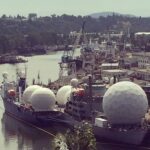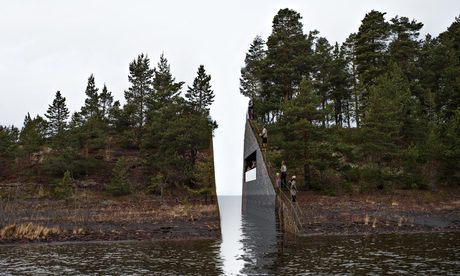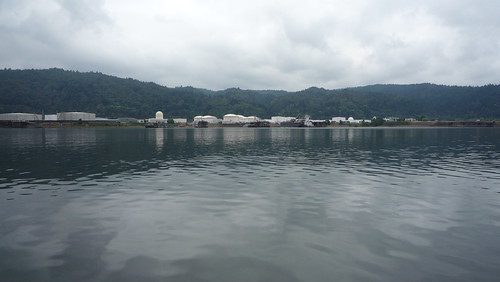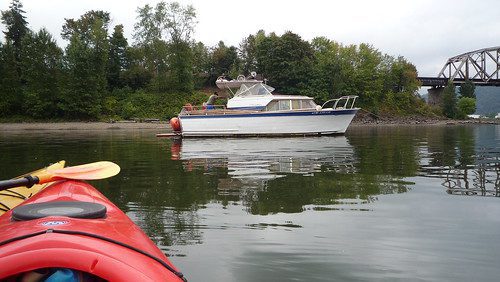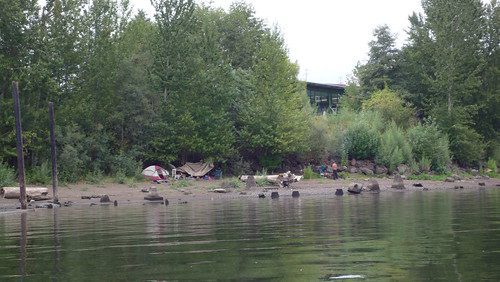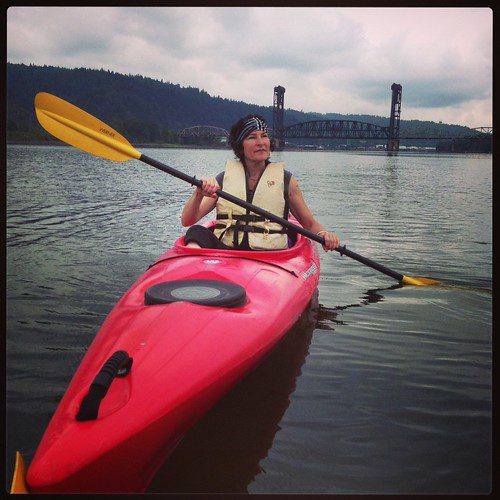Research Journal
-
April 9, 2014
Willamette Cove, April 2014
Walking through WC – the crown jewel of the LWG – with Sara Huston and John Paaninen of tlaag.
Stay tuned for summer workshops and outings.
-
March 11, 2014
mesocosm (times square)
-
March 11, 2014
my first cast mushroom material, from a plastic cruise ship candy mold
Tags:Using Ecovative‘s GIY kit at school…
A toy boat… cannot float, as the mycelium didn’t grow solid enough into the substrate. Not only did it hold as a form, but the two halves grew somewhat together, many days after I unmolded the cast.
-
March 10, 2014
Spider perception
Tags:I teach a 7 week class called Interspecies –
David Tracy’s made a deceptively simple array of spider eyes, and has been wearing them enough to be accustomed to seeing behind himself. Umwelt is a tough thing- some compromises as you reach for empathy or understanding.
He says this is his “proof of concept for a project called An Amateur’s Design Guide to Animal Perception.” His post here.
Exciting.
-
March 10, 2014
Wounding the Landscape
Tags:I find the decision to wound the land itself a disturbing response to a massacre by a human. Reminds me of burning animals at the stake as proxies. I’d suggest renaming it: Wounding the Landscape
-
March 6, 2014
fabricating with fungus
Tags:We’re just finishing a 7 week course at ITP called The Fungus Among Us. It’s an independent project/research studio for 16 students looking at fungus for fabrication, food, as metaphor (eco-systems thinking), and touched on spirituality, network theory (slime mold way-finding and the “wood wide web” even though they’ve been ousted from the Kingdom). We have been growing mushrooms for food, for dye, and working with Ecovative‘s GIY (grow it yourself) inoculated substrate in molds. Students are working on lichen, Co2 sinks, electronics interfaces, material fabrication, pattern sonification… Sue Van Hook gave an incredible overview talk about fungi and Ecovative; Christie Leece talked about her beautiful Gowanus Canal oyster mushroom remediation project; and Corrie Van Sice came and talked about good lab practices around cultivation and inoculation. Students did case studies with a range of “experts.” It was a good trial run, we all learned a lot, and it’s compelling within the context of this program.
Here’s our grow tent
I’m working now on some buoy forms, which I hope will end up embedded with radio controlled LEDs for “the project” in PDX:
And here’s a systems map and catch-all examination of using psilocybin in the health care system for hospice work, therapy, addiction etc, after reading the NY Times article, How Psychedelic Drugs Can Help Patients Face Death — on psilocybin / coping with dying trials:
-
January 2, 2014
Steve Easterbrook on systems thinking and climate
Tags:Many good posts on systems, boundary critique, climate.
…where systems thinking really gets interesting is when we include ourselves as part of the system we’re describing. For example, for the climate system, we should include ourselves as elements of the system, as the many of our actions affect the release of greenhouse gases. But we’re also the agents that give some aspects of the system their meaning or purpose – the fossil fuel extraction and production system exists to provide us with energy, and one could even argue that the climate system exists to provide us with suitable conditions to live in, and that ecosystems exist to provide us with food, resources, and even a sense of wonder and belonging. The interesting part of this is that different people will ascribe different meanings and/or purposes to these systems, and some would argue that to ascribe such purposes is inappropriate.
Here: http://www.easterbrook.ca/steve/2011/02/systems-thinking-for-climate-systems/
-
December 30, 2013
The Mississippi shimmies across the Alluvial Plain
Robert Krulwich for NPR writes about cartographer Harold Fisk’s visualization of the river’s historical paths here.
This is a map of the Lower Mississippi’s evolving floodplains, lifted from cartographer Harold Fisk’s 1944 report, Geological Investigation of the Alluvial Valley of the Lower Mississippi River.
You can download the report in its entirety, including numerous maps like this one, from the U.S. Army Corps of Engineers web site (if you’re looking for maps like the one up top, you want to click the link on the lefthand side of the USACE website that says “Fisk 44 Oversized Plates.” (thanks io9)
-
-
August 24, 2013
kayaking the superfund
Went kayaking with Joan Lundell, recent grad from PNCA MFA in Collaborative Design and Sasha Davies of Cyril’s fame; Joan generously hauled her boats up to Cathedral Park where we set off, and in 4 hours of drifting and poking around, got as far as the edge of Swan Island. It’s doleful out there, especially on an overcast day. Across the river, what look like gas storage tanks read like a cluster of blank mosques. Homeless camps dot the shore. “Aquatic squatters” live in boats in Willamette Cove, near-permanent transients in the heart of LWG’s superfund remediation plan, ducks are drifting, dogs are chasing sticks into the water, and people are fishing.
I’m confused by the directive that you’re not supposed to walk in the sediment, where most of the superfund site’s toxins are embedded. This is where people are camping, and dogs are being walked. And none of this gets back into the water, next to a swimming beach? Nothing stirs it up, not even “prop wash” – propeller agitation from the tankers that come up and down the river collecting grain and depositing cargo from overseas?


